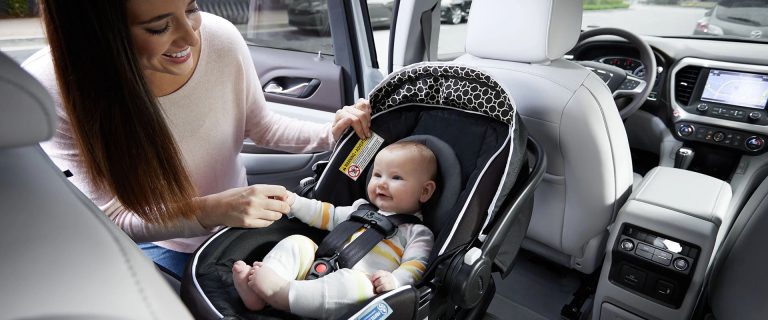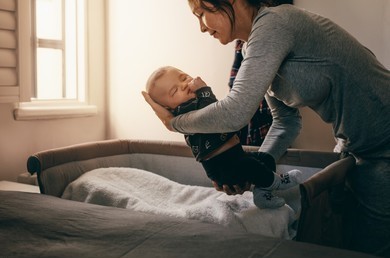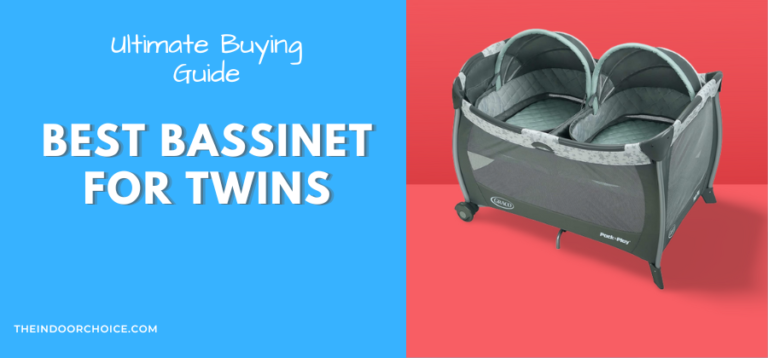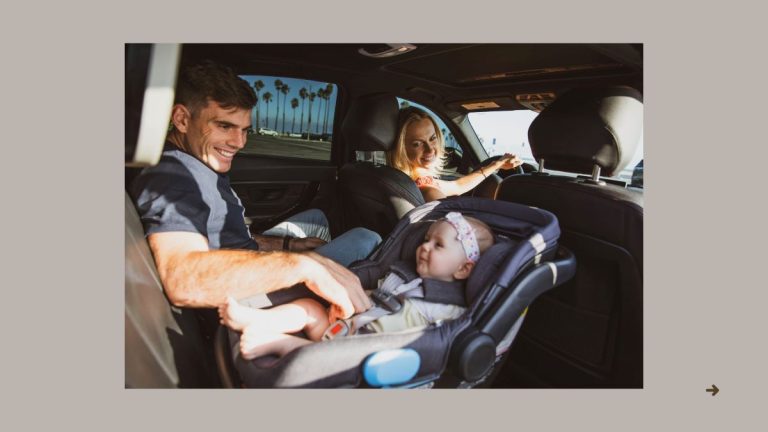How To Choose A Baby Carrier effortlessly
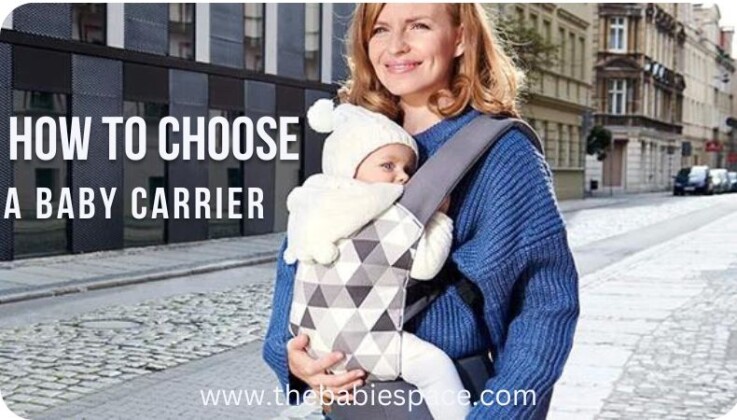
Last updated on October 26th, 2022 at 12:26 pm
How to choose a baby carrier? well! You are a new parent and you need to carry around your baby while on groceries, but your arms are not in this position for this multitasking venture. After all, every mom has to wear multiple hats at a time. Here comes a baby carrier that is a blessing for such folks.
I do remember I used to ask my husband to carry him while we went for a hangout, every fragile mom like me (lol) couldn’t hold the child in her arms for a longer period of time.
So, for the best way to carry your baby, this post is for you to let know what kind of carrier is best for you. We’re all set to ease up your pain to choose the best baby carrier for you and your baby! Without further ado’s Let’s start.
How to choose a baby carrier
How to choose a baby carrier for a 1-month-old? But before jumping towards our query we need to figure out which is the best baby carrier for newborns, or what TYPE of baby carrier you need.
What are the types of baby carriers?
There are many types of baby carriers according to the baby’s sitting position in it, but mostly three types are common.
Each one is with its own advantages and disadvantages. The most popular type of carrier is a front-facing carrier that is easy to use and comfortable for both baby and parent.
However, some parents prefer back-facing carriers, which can be more comfortable for long walks or hikes. Whichever type of carrier you choose, be sure to try it on with your baby before purchasing to ensure a good fit.
A baby carrier is a device used to carry an infant or young child on the body of an adult. Different types and styles of carriers are often specific to certain cultures.
Front-pack: carriers are generally considered the safest option, baby can be positioned in facing or out facing as they keep the child close to the parent and secure in a harness.
Backpacks: Another popular type is backpack carriers included
Baby slings or wraps: Slings are like a pouch that you wear over one shoulder, and the baby sits in it. Wraps are long pieces of fabric that you wrap around your body to tie the baby in place.
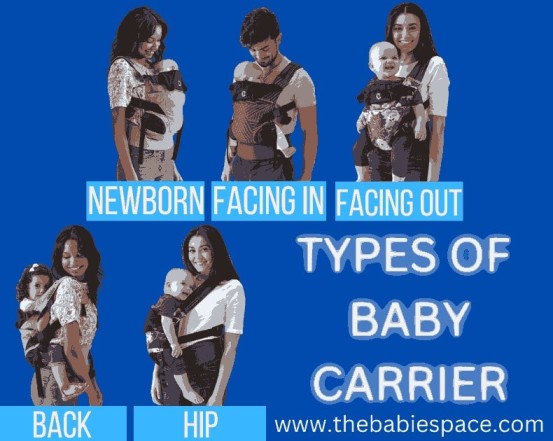
11 Things to consider when buying a baby carrier:
When choosing a baby carrier, there are a few things to consider.
- Baby’s Weight and age limit
- Material
- Use Duration
- Parent size
- Type (Front facing + Back facing)
- Maintenance
- Comfortable
- Easy to fold
- Budget-friendly
- Safety design
- Test & Trial
Baby’s Weight limit and age limit:
There are a few things to consider when buying a baby carrier. The weight and age of the baby are important factors. The weight limit for most carriers is 35 pounds. If the baby is over 35 pounds, the carrier may not be able to support the baby’s weight.
The age limit for most carriers is 12 months. If the baby is over 12 months, the carrier may not be able to support the baby’s head and neck correctly.
Material:
Another thing to consider is the type of material the carrier is made from. Carrier materials can range from soft and cuddly fabrics to more durable and weather-resistant materials.
Again, it’s important to choose the option that best suits your needs. Soft fabrics might be more comfortable for you and your child, but they might not hold up as well in inclement weather.
Use Duration:
Consider how LONG you will be using the carrier. If you plan to use it for long walks or hikes, look for a carrier with comfortable straps and good back support. If you just want a carrier for short outings or errands, any type of carrier will do.
Type (Front facing + Back facing):
There are a few things to keep in mind when choosing a baby carrier. The most important consideration is how you want to carry your child.
There are two main options for carrying your child – front-facing or back-facing. Front-facing carriers allow you to carry your child facing forward, while back-facing carriers allow you to carry your child facing backward.
Each option has its own benefits and drawbacks, so it’s important to choose the one that best suits your needs.
Parent size:
Keep in mind to buy a baby carrier that is feasibly size adjustable for any sized wearer.
Meet safety standards:
The carrier must meet the safety standards of the OEKO-TEX certificate, and be certified by the international hip dysplasia institute.
Safety design:
Safety first. Obviously, you’ll want a carrier that is safely designed. Look for one with well-padded shoulder straps and a waist belt, and make sure it has been tested to meet safety standards.
Maintenance:
A baby carrier grows older with your child hence like every gadget it needs maintenance, as well as a baby thing that must be kept germ free.
Keeping this thing in mind always be sure about the material and stuff that could be washed or cleaned easily. Machin washable carriers are so much handy for the best maintenance.
Easy to fold:
I always prefer to buy the best portable belongings for myself and my children as well, for traveling parents like us easy-to-fold and less space requiring gadgets are the cherry on top.
Budget-friendly:
think about your budget. Baby carriers can range in price from around $30 to over $200. Choose the best quality carrier you can afford that will meet your needs.
Test & trial:
Finally, try out different carriers before purchasing one. Ask friends or family members if you can borrow their carriers to get an idea of what style and brand work best for you and your baby.
Infantino Flip Advanced 4-in-1 Carrier
Momcozy Baby Wrap Carrier Slings
Tushbaby – Safety-Certified Hip Seat Baby Carrier
How to safely use a baby carrier
A baby carrier is a great way to keep your newborn close while freeing up your hands. Here are a few things to keep in mind when using a baby carrier:
First, make sure that the carrier is well-fitted to your body. It should be snug enough that the baby won’t wiggle around, but not so tight that it’s uncomfortable for you.
Secondly, support the baby’s head and neck at all times. This is especially important when they’re first born, as their necks are still weak and fragile. Use one hand to support the back of their head, and the other to hold them close to your body.
Be aware of your own posture while carrying the baby. Avoid slouching or leaning over too far, as this could put a strain on your back or cause the baby to fall out.
Another great thing about baby wraps is that they’re very versatile. There is a variety of ways you can safely use them as per your choice or feasibility, depending on what’s most comfortable for you and your baby. And, if you get hot while wearing one, you can always take it off and put it in your diaper bag for later.
Don’t forget to take breaks! When you’re carrying your baby around all day, it can be easy to get tired. Make sure to take breaks often so you can rest your arms and shoulders.
Pay attention to your baby’s cues. If they seem uncomfortable or start crying, it’s time to stop using the carrier and figure out what the problem is.
Are baby wraps safe for newborns:
A baby carrier or baby wraps are an essential part of baby items in every second house globally since ages as a way to keep newborns close to their parents. But are baby wraps really safe for newborns?
Baby wraps or baby slings are not so recommended for NEWBORNS, they can cause suffocation to them. A baby wrap or baby sling is safe for babies above 4 months because the neck-holding milestone is achieved, which can help to stabilize the posture in the wrap.
African baby wraps are very common in third-world countries. Every culture utilizes the baby carrier in its own way.
Baby wraps have become increasingly popular in recent years as well with an evolving form, but there is some debate about their safety.
Some experts believe that wraps can put too much pressure on a newborn’s spine, while others argue that they provide essential support and bonding time for both parent and child.
When it comes to newborns, the SAFEST option for carrying them is definitely a baby wrap but with the right technique.
Baby wraps evenly distribute the baby’s weight around your body, which helps to avoid any back or neck pain to the wearer. Plus, they allow you to keep your baby close to your heart, which can be very comforting for both of you.
If you’re looking for a safe, comfortable way to carry your newborn, a baby wrap is definitely the way to go!
The bottom line is that every parent needs to make their own decision about whether or not to use a baby wrap.
What size baby carrier should I get?
As a new parent, you may be wondering what size baby carrier will be well fitted for your baby. Here are a few things to consider when making your decision:
First, think about the age, weight, and height of your baby, Usually, three sizes come
Small: (0 to 18 months)
Medium: (3 to 36 months)
XL: (8 to 48 months)
You can further look into it as per your child’s size in centimeters. A carrier that is too small will be uncomfortable for both you and your baby, while a carrier that is too large can be cumbersome to carry around.
Second, take into account how long you plan on using the carrier. If you only plan on using it for short periods of time, then a smaller size may be adequate. However, if you anticipate using the carrier for longer periods or even daily, then a larger size may be necessary.
Finally, consider your own body type and how comfortable you want to be while carrying your baby. If you are petite, then a smaller carrier may work better for you.
What is the Baby carrier age limit:
What age should a baby use a carrier? Or What is the baby carrier age limit to start using a baby carrier, is a common question for every baby carrier user. Well, there is no hard and fast rule for baby carrier age limit. This is up to you and your babies will like when they love it.
But most baby carriers are designed for babies who are at least 4 months old and weigh at least 15 pounds. Some carriers can be used with infants as young as two weeks old, but it’s best to wait until your baby is a bit older and more robust before using one.
When choosing a carrier, make sure to read the manufacturer’s instructions carefully. And always use caution when carrying your baby in a carrier. Never leave your baby unattended in a carrier, and never use a carrier that doesn’t seem sturdy or well-made.
Conclusion:
When choosing a baby carrier it is important to consider your lifestyle and what type of carrier will best suit your needs. There are many different carriers on the market, Ultimately, the best carrier for you is the one that you are comfortable using and that keeps your baby safe and secure.
So look at the bottom to find the one that will work best for you. If you have any questions, please comment below on your personal experience.

